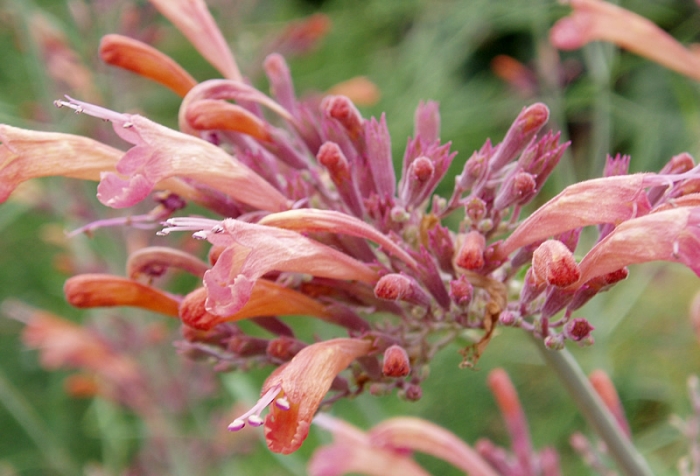Threadleaf Giant Hyssop
(Agastache rupestris)
Threadleaf Giant Hyssop (Agastache rupestris)
/
/

photo by Charlie McDonald; uploaded by Xiaphias
Public domain
Image By:
photo by Charlie McDonald; uploaded by Xiaphias
Recorded By:
Copyright:
Public domain
Copyright Notice:
Photo by: photo by Charlie McDonald; uploaded by Xiaphias | License Type: Public domain | License URL: https://creativecommons.org/public-domain/ | Uploader: File Upload Bot (Magnus Manske) | Publisher: Wikimedia Commons | Title: Agastache_rupestris1_lg.jpg | Notes: User created page with UploadWizard |








Estimated Native Range
Summary
Agastache rupestris, commonly known as Threadleaf Giant Hyssop, is a deciduous perennial subshrub or herb native to rocky slopes and canyons in the Southwestern United States, particularly in Arizona and New Mexico. It typically grows to a height of 2-4 feet (0.6-1.2 meters) with a similar spread. This plant is characterized by its fine-textured, thread-like leaves that are gray-green in color and its striking tubular orange flowers with purple calyces that bloom from mid-summer to fall. The flowers are highly aromatic when crushed and are quite showy, making them a highlight in the garden during their blooming season.
Threadleaf Giant Hyssop is valued for its drought tolerance and is a favorite for xeriscaping. It is also used in rock gardens, as a border plant, and in containers. Its flowers are known to attract hummingbirds and other pollinators, adding to its ecological value. Agastache rupestris requires minimal maintenance once established and thrives in full sun to part shade. It prefers well-drained soils and can tolerate nutrient-poor conditions. While generally disease-free, it can be susceptible to root rot if overwatered or planted in poorly drained soils.CC BY-SA 4.0
Threadleaf Giant Hyssop is valued for its drought tolerance and is a favorite for xeriscaping. It is also used in rock gardens, as a border plant, and in containers. Its flowers are known to attract hummingbirds and other pollinators, adding to its ecological value. Agastache rupestris requires minimal maintenance once established and thrives in full sun to part shade. It prefers well-drained soils and can tolerate nutrient-poor conditions. While generally disease-free, it can be susceptible to root rot if overwatered or planted in poorly drained soils.CC BY-SA 4.0
Plant Description
- Plant Type: Subshrub, Herb
- Height: 1.5-2 feet
- Width: 1-1.5 feet
- Growth Rate: Moderate
- Flower Color: Orange, Pink
- Flowering Season: Summer, Fall
- Leaf Retention: Deciduous
Growth Requirements
- Sun: Full Sun, Part Shade
- Water: Low, Medium
- Drainage: Fast
Common Uses
Bank Stabilization, Bee Garden, Bird Garden, Border Plant, Butterfly Garden, Deer Resistant, Drought Tolerant, Fragrant, Groundcover, Hummingbird Garden, Low Maintenance, Potted Plant, Rabbit Resistant, Rock Garden, Showy Flowers, Street Planting
Natural Habitat
Native to rocky slopes and canyons in the Southwestern United States
Other Names
Common Names: Mexican Hyssop, Licorice Mint, Thread-Leaf Giant Hyssop, Smalbladig Kolibrimynta
Scientific Names: , Agastache rupestris, Cedronella cana var. lanceolata, Cedronella rupestris, Agastache lanceolata, Brittonastrum lanceolatum, Brittonastrum rupestre,
GBIF Accepted Name: Agastache rupestris (Greene) Standl.